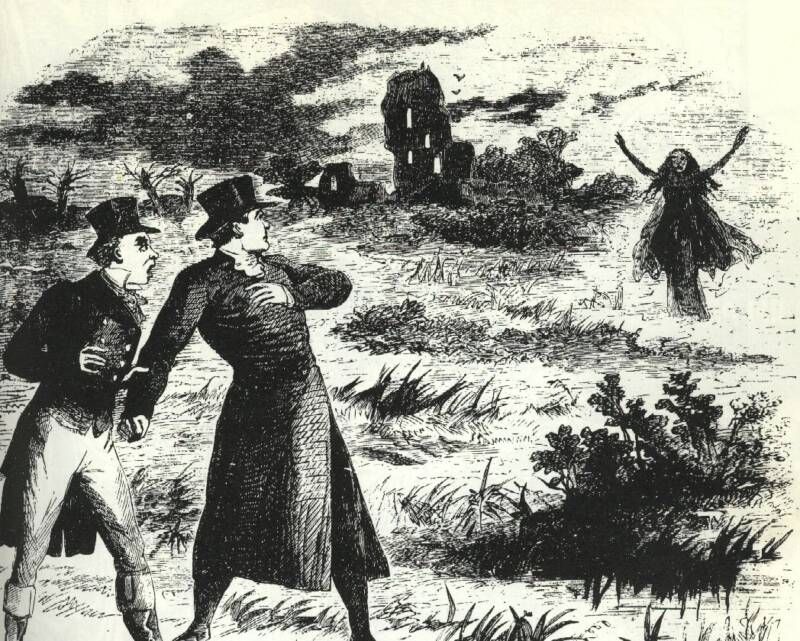Banshees, The Wailing Heralds Of Death

Public DomainThe banshee is among the most terrifying Irish folklore creatures.
Banshees represent a much darker side of Irish folklore.
In Celtic mythology, the banshee is also known as a bean sídhe, or a “woman of fairyland.” But while her name sounds inviting, don’t let it fool you. Among the most terrifying figures in Irish lore, banshees are supernatural beings whose bone-chilling wails are said to warn of an imminent death in a family.
Generally, a banshee appears as a woman who sings a mournful song or shrieks in the night. She is often represented as an old crone with blood-red eyes and long, flowing hair. Other times, however, the banshee appears as a beautiful young woman — or else as a headless figure, naked from the waist up and carrying a bowl of blood.
Contrary to common misconception, the banshee does not actually cause a person’s death. She simply forecasts it. In fact, at various points in time, legends of the banshee painted her in a more sympathetic light. For instance, it was said that women who accepted alcohol as payment for singing at funerals were doomed to become banshees. Other legends say banshees watched over Irish families and mourned with them as their kin died.
Belief in banshees was so widespread that there are numerous historical accounts of alleged banshee encounters, with some as recent as the late 1940s. And in 1801, the Commander in Chief of the British forces in Ireland claimed to have been visited by a banshee. Many of these alleged witnesses described the creature vanishing into a cloud of mist as soon as it is spotted.
Though banshees may not have the international recognition of leprechauns, they are intrinsically tied to the history of Ireland, representing base human fears of death and losing family members.





